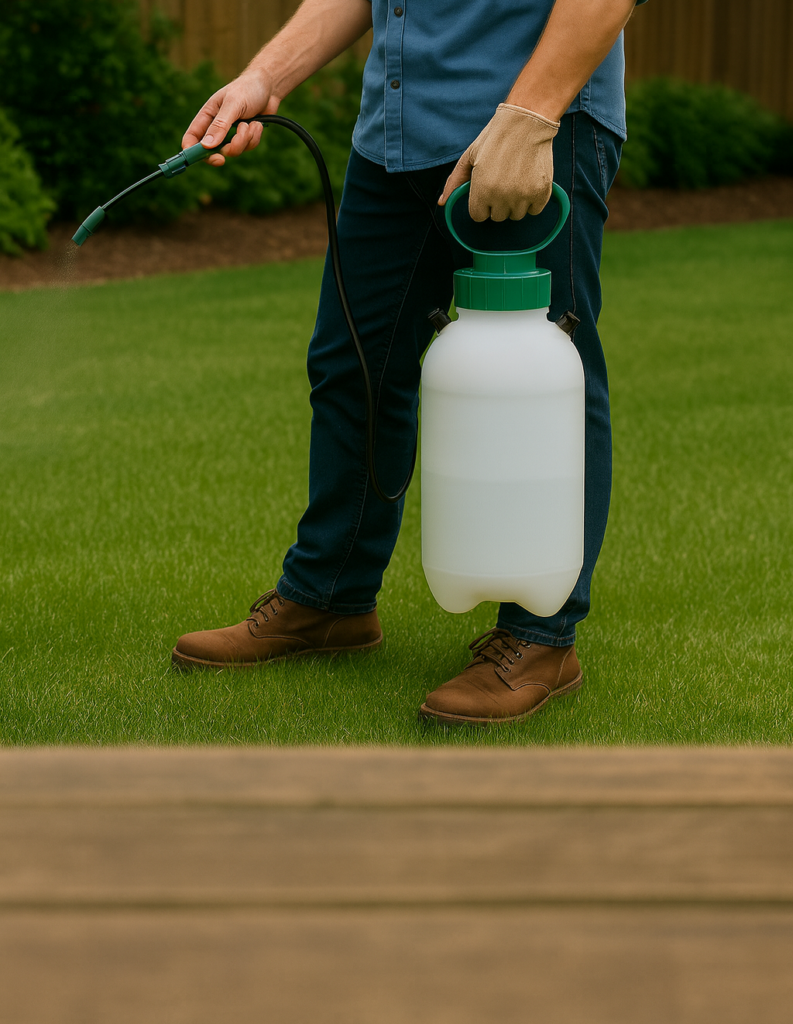Pesticide labels aren’t suggestions. They’re the instructions that tell a product how to be used safely and legally. At Ditch The Itch we treat the label as the operating manual: it tells us what to apply, how much to apply, what protections the applicator needs, and when treated areas are safe again. If you’re hiring a pro (or just curious about what we do), here’s what label literacy looks like in practice and why it matters.
Read the right parts of the label
A label covers several practical things homeowners care about: the pests the product controls, the permitted use sites, the application rate, any required personal protective equipment for the applicator, and re-entry or restricted-entry intervals. It also lists environmental precautions—which is why we pay attention to pollinator language and waterway warnings when picking products and times to treat.
Signal words, PPE, and re-entry windows
You’ll see short signal words on every product—like “Caution,” “Warning,” or “Danger.” Those words reflect the precautions applicators must take. Labels also spell out the PPE needed during mixing and application. For some products, labels include a specific re-entry interval; for our mosquito barrier sprays, for example, treated foliage typically dries in about 1.5 hours, after which the area is considered safe to re-enter. If you’re concerned about a specific product, ask for the label—we’ll always share the product name and explain the instructions we’re following.
Protecting pollinators and non-target life
Most homeowners want to protect bees and butterflies—and the label helps guide that. Good labels include pollinator precautions; we combine those directions with application timing (after dusk when pollinators are less active) and techniques designed to minimize drift into open blooms. If pollinators are a priority on your property, tell us up front—it changes product choice and timing.
Residuals, efficacy, and expectations
Labels describe how long a product is expected to provide residual control. That matters because “longer residual” isn’t always the right choice for every yard or every pest. We match product claims to the site: for mosquitoes, we commonly plan visits on a 21-day cadence to maintain protection; for other pests, the scheduling and residual expectations vary by label. If you want realistic expectations, ask us which product we’ll use and what the label says it will accomplish.
Mixing, storage, and disposal—the responsible parts
Labels tell us how to mix, store, and dispose of products and empty containers. Don’t pour leftover product down a storm drain. Proper disposal and containment prevent contamination and are legal requirements; we follow those steps every time.
What to ask your provider
When you contract a treatment, ask, “What product are you using?” Can you show me the label or explain the re-entry guidance? What pollinator precautions will you take? If you have kids, pets, or beehives nearby, tell us before treatment so we can select timing and products that reduce exposure.
A final word: following the label protects everyone
Following the label protects applicators, your household, your pets, and the environment. At Ditch The Itch, our licensed technicians apply products in line with label directions and best practices—and we’ll explain the protections we’re using on your property. If you want us to review a product label with you or explain the safety steps we’ll take at your home, call 833-366-4824 or request a quote online. We’ll show you the label, explain the protections, and design a plan that keeps your yard usable—and safe—all season

